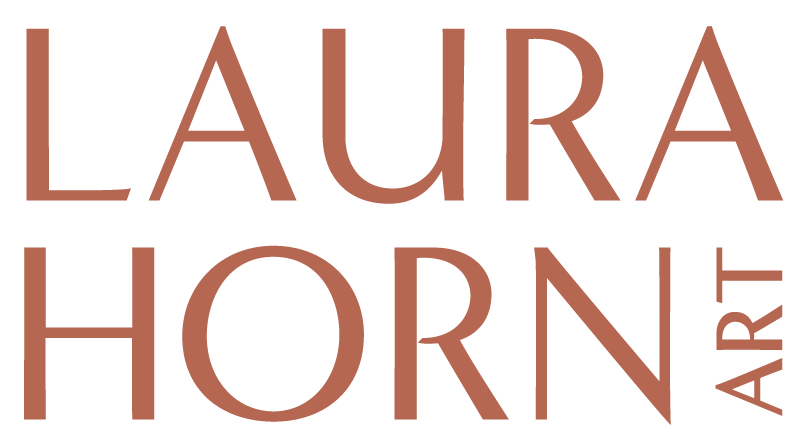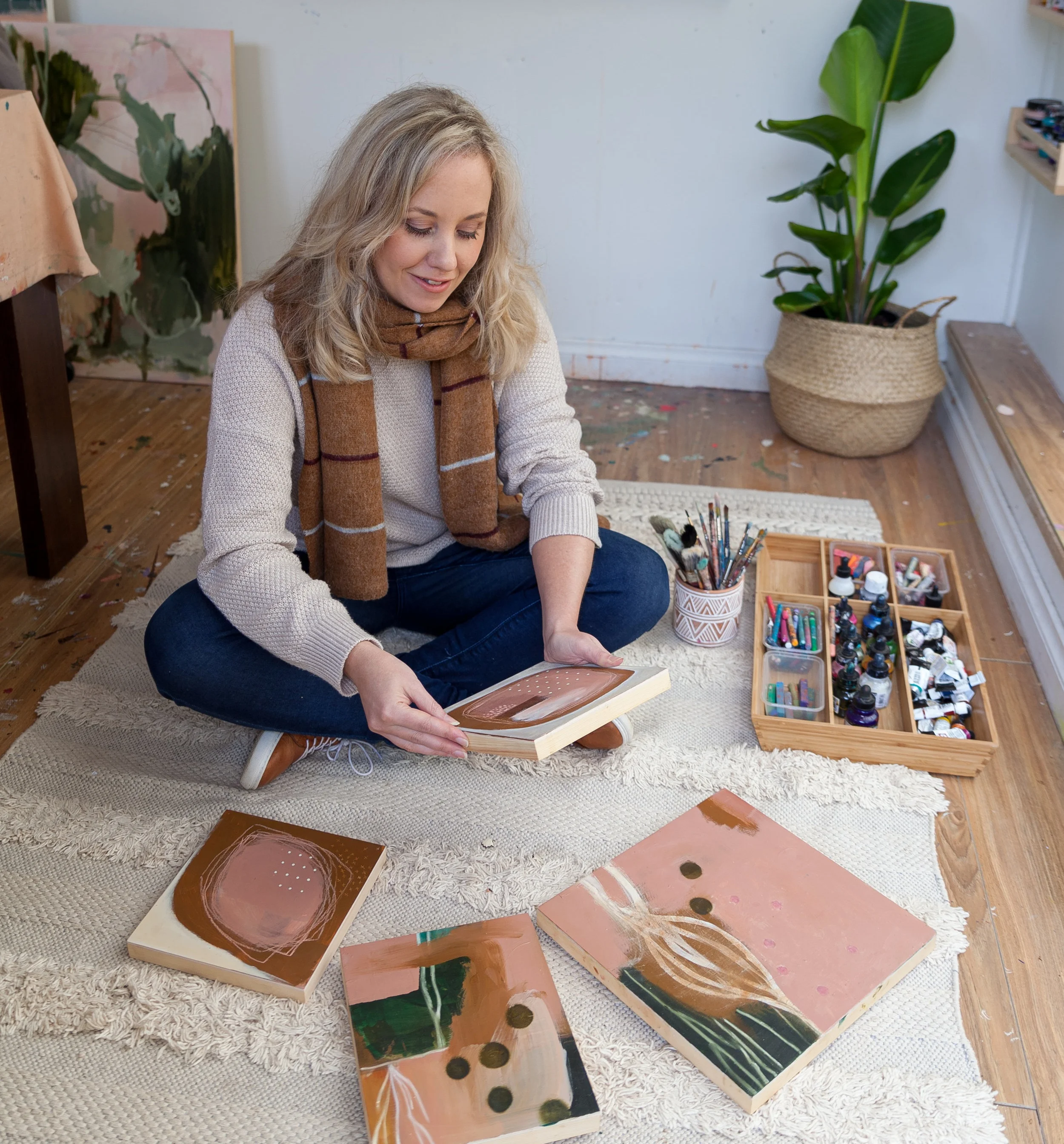10 Tips to Improve Your Painting
EPISODE 43
Recently, I feel like my art has improved. Hallelujah! So with that said, what’s changed? Nothing big, but there are several little things that I wish I had known earlier in my art journey.
As I move into a busy month getting ready for my South Australia’s Living Artist Exhibition (SALA) exhibition in August, I’ve been reflecting on all this and trying to pin-point what has been working well so I can do more of it!
I’ve come up with 10 things and today I am sharing them on the podcast. Some might seem obvious but as a self-taught artist there’s a lot of bumbling through that happens and unknown gaps in knowledge!
1. Be selective about your substrate.
Tip: Try out different surfaces to see what paper, canvas, or panel gives you the best result. Consider using higher quality products for work that you are going to sell. For paper, I love Canson Heritage & Arches watercolour paper (cold press, 300 gsm) and for canvas work, the deep edge cotton canvases by Winsor & Newton are excellent quality.
2. Have plenty of water containers and brushes on hand.
Tip: Have several water containers in a variety of sizes (e.g., jars, Tupperware containers, buckets) around you as you paint. Keeping your brushes clean will help you keep your colours vibrant. When I paint with acrylics, I also like to have a large number of brushes on hand, as sometimes it’s easier to just grab a new brush and keep the momentum going.
3. Leave white space around your work.
Tip: Surround your work with white space so you can see it more clearly. I do this in a multitude of ways. I have white walls in my studio that I re-paint regularly, a light-coloured table cloth, and I often tape the edges of my watercolour paper with masking tape to create a white frame around the work. I also use framing mats as a viewfinder to test out compositional ideas in larger pieces of work.
4. Have a reference or theme for your work.
Tip: It is often much easier to approach a painting with a loose plan or idea. Have a think about whether there is a concept that you could explore in your work. When I lived close to the beach, I often used pebble shapes in my work. Now I live in the hills and I am endlessly inspired by trees.
5. Limit your palette.
Tip: See if you can create a painting using only 3-5 colours. I find that doing this brings more harmony into my work and challenges me to mix different combinations and expand my knowledge of colour. I also love planning my colour palettes-not for everyone I know-but I enjoy coming at a painting with a colour concept in mind.
6. Boost your contrast.
Tip: This tip is my go-to when I am stuck while painting. When I am not sure what to do next and the painting feels a bit blah, I always check whether the painting needs more contrast. I check my value contrast first (i.e. whether I have a good range of light and dark colours) and then I look at other ways of adding contrast, such as using complementary colours, adding texture (for this I love using a Princeton Catalyst Tool) or bringing in a directional or design change in my mark-making.
7. Pay attention to your negative space.
Tip: It’s easy to focus all your energy on the active areas of a painting, but don’t forget the negative space. The quiet hero of a painting, in my opinion! You can completely alter the mood of a painting by changing the shape, quantity, or colour of the negative space. It’s such a valuable tool when painting.
In these pieces the negative space is as important as the positive space.
8. Experiment with mediums.
Tip: A great way to make your work and process more interesting is to experiment with different mediums. A medium can change the quality of your painting and bring about exciting new possibilities. You can make the paint thicker or thinner, change the texture, and affect the transparency. My personal favourite is Golden Glazing Liquid. I use this to build up thin transparent layers in my acrylic paintings.
9. Use quality white paint.
Tip: Not all white paint is created equal. A cheaper quality white paint doesn’t have the coverage or luxurious creamy feel of a higher quality brand. I buy large tubs of Golden Heavy Body Acrylic in Titanium White. I try not to use too much in my paintings, as I find that the work can get a bit chalky if I am very heavy-handed. Mind you, it really depends on the type of look you are going for. For my work, I try not to use too much, but when I do, I go for the good stuff!Tip: This is my favourite tip of all because it has been wowing me so much lately! Simply put, your work will look so much better if you take the time to finish it to a high standard. How you finish your art is very personal, but for me it involves a fairly lengthy process.
For my canvases, I paint my edges, spray the painting with Golden Spray Varnish and then finish with two light coats of brush-on Matisse Solvent Based Varnish. If I am feeling fancy, I will get the painting float framed in Tasmanian Oak as I love the look of a timber frame.
For my paper pieces, if they have mixed media supplies in them, I will fix everything using a spray varnish, but if they are only watercolour, I will often leave them unvarnished. While I sometimes buy off-the-shelf frames to save money, I love going to the framers to get a custom-made mat as that gives the piece a more luxurious, high-end feel.
I hope you find these tips helpful. It is the sum of many small things that makes for a great painting!
HELP THE PODCAST GROW
Subscribe | Click the subscribe button in your podcast player to be notified of new episodes weekly. Find us on all the main platforms including iTunes, Google Podcasts, Stitcher, Spotify and Overcast.
Review | Reviews matter! When you leave a five star review on iTunes, it encourages other artists to check out the podcast and join the community. Plus, it brightens our day!
Share | If you loved an episode how about sharing an Instagram story, writing a Facebook post or telling a friend. Every share makes a difference and helps us to connect with new listeners.







